The vastness of content on the internet continues to grow by the millions each day. 300 hours of video is uploaded to YouTube every minute and 95 million photos and videos are shared on Instagram every day. In our digital world there are some brands who do content wrong and some who get it right. If making headway with your content strategy and development is on your radar, here are 5 brands you should emulate, regardless of the service you offer.
1. Patagonia
Patagonia’s blog, The Cleanest Line, covers both adventures and all things environmentally friendly. Written in a travelogue style, this type of content and it’s execution will make you want to hop on a plane and never come back. Stories are written by people like Luke Nelson, a professional ski mountaineer, describing his experience running to reach and return from a peak in Salt Lake City all while raising money and awareness for the heavy pollution around town.

Instagram is another strong point for Patagonia, a place where they showcase their visually engaging brand. They’ve managed to combine their user-centric focus and experiences with the visual capabilities Instagram has to offer. Their account is filled with submitted pictures of their customers traveling and adventuring all over the world. Although this is a social platform, Patagonia continues to tie their blog and their Instagram account together for maximum user engagement.
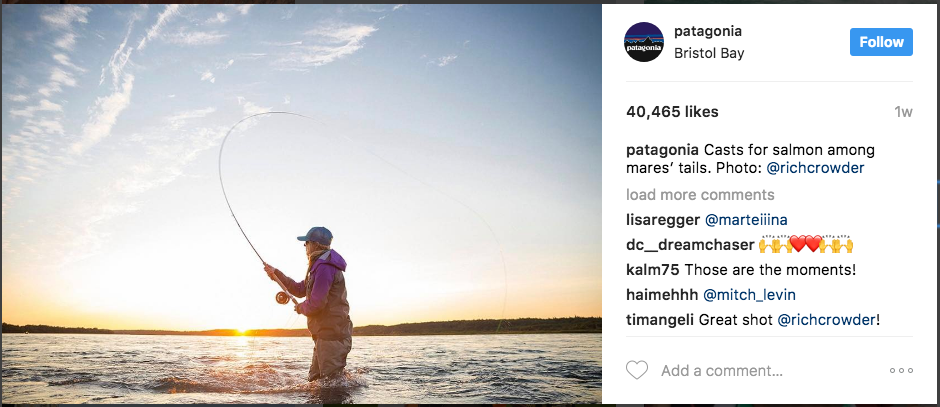
2. Airbnb
You don’t have to have a blog to have amazing site content, and Airbnb knows that. With the reinvention of their brand came a new focus, “holistic,” where they show their users how authentic Airbnb is as a brand. They showcase their users and offer one of a kind experiences in addition to typical lodgings. Garrett in Los Angeles teaches you to surf and takes you to his favorite restaurants, Marc will give you a sunset cruise on his wooden sailboat in Barcelona, and Bret takes you on a headlamp trail run outside of San Francisco. Users are encouraged to travel and experience while consuming content and experiences through Airbnb.
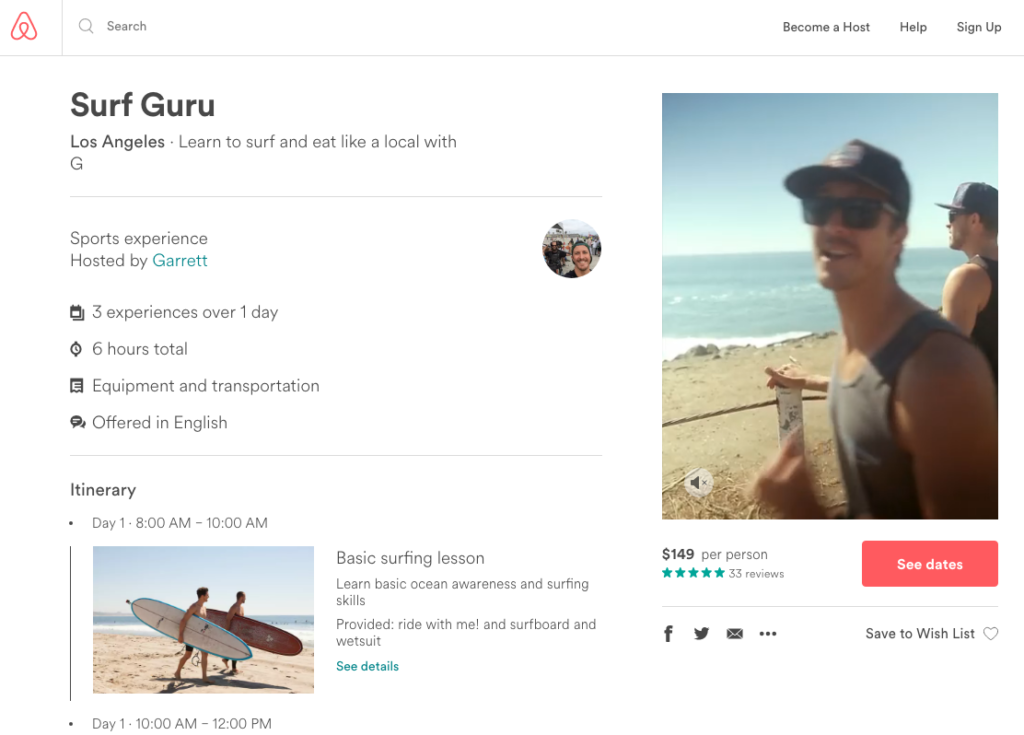
3. Warby Parker
Warby Parker’s mission and values set them apart from many of their competitors, something that has driven customers their way in droves. For every pair of glasses a customer purchases, Warby Parker donates a pair. In addition to this they have flipped the glasses purchasing model bringing giving try-at-home a new vehicle.
This spirit of giving and creative thinking is showcased in their content. The Warby Parker blog creates a community and has embraced the “glasses wearing reader” stereotype. They create fun flow charts showing what a user should read next, and imagine what would be in the bag of a famous character. Every month they create a round-up of their favorite user submitted photos featuring their products. By highlighting customers and tailoring content towards Warby Parker created niches the brand has created a loyal following among many.
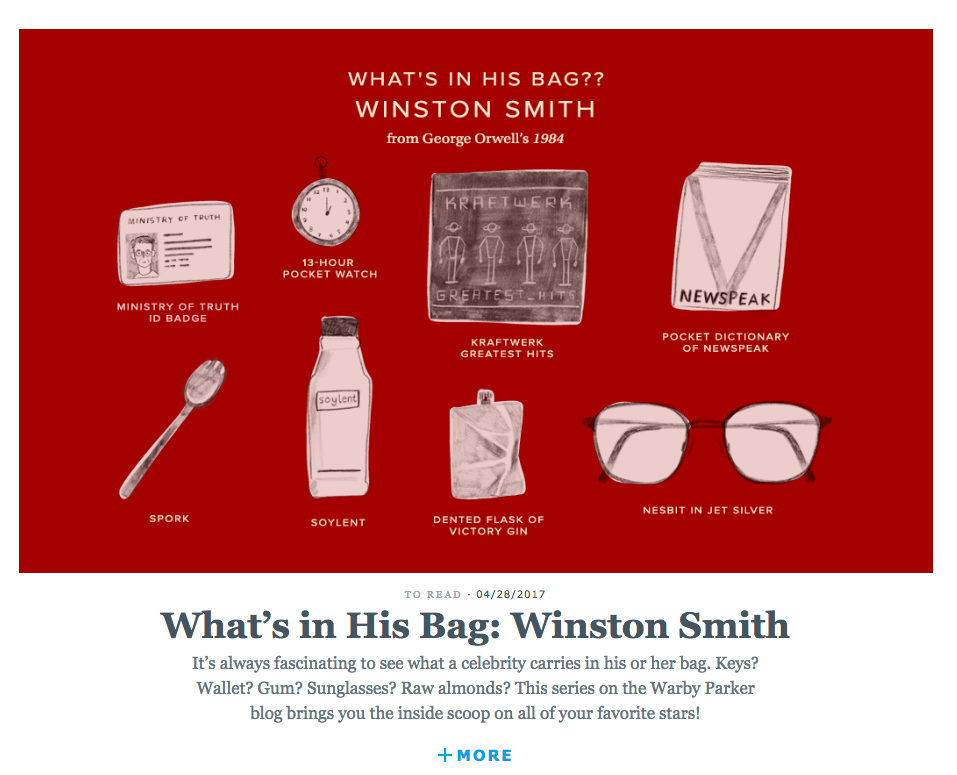
4. Whole Foods Market
When it comes to content strategy and execution, Whole Foods does an extremely good job. The learning materials they offer are endless. The Whole Foods website is user friendly and easy to navigate, with options to select and curate exactly what you want to see. Their resource section includes new recipes, tips for food prep and storage, trends, and more. On their homepage they feature all their content as well as a curated sampling of users submitted content. Popular Instagram foodie feeds are piped into to an easily sortable grid on the homepage.
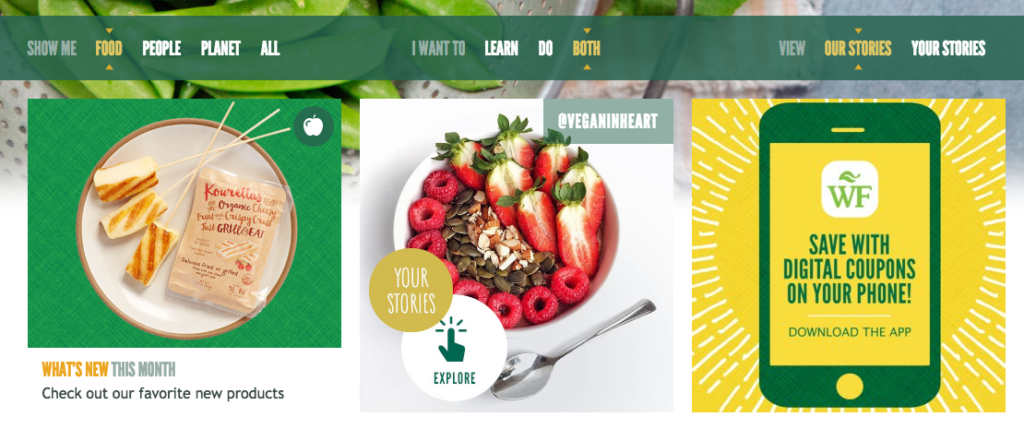
Whole Foods also maintains two blogs, their CEO John Mackey’s as well as their official company blog, Whole Story. Their blog gives the company a way to publish timely content based on upcoming events along with evergreen content. For Mother’s Day they featured breakfast ideas. For summer, they’ve laid out rules for grilling season. The evergreen content on Whole Foods focuses on ideas for stocking up on healthy spices and questions to ask your local fish supplier. With such a wide variety of foods and items to choose from, Whole Foods captures compelling details with stunning visuals to provide the complete experience.
5. Etsy
Producer driven Etsy takes a different approach to site content. To begin most of their content is user driven. They’ve created suggestions for photos and descriptions but it’s the sellers who create listings. Their platform emphasizes being descriptive with a customer service focus. Their blog features and highlights specific sellers through their “Featured Shop” segments. Artisans tell their story and show off their shops giving buyers a peak behind the curtain. They focus heavily on inspiration and curate experts to provide ideas for those looking to DIY or find upcoming trends.
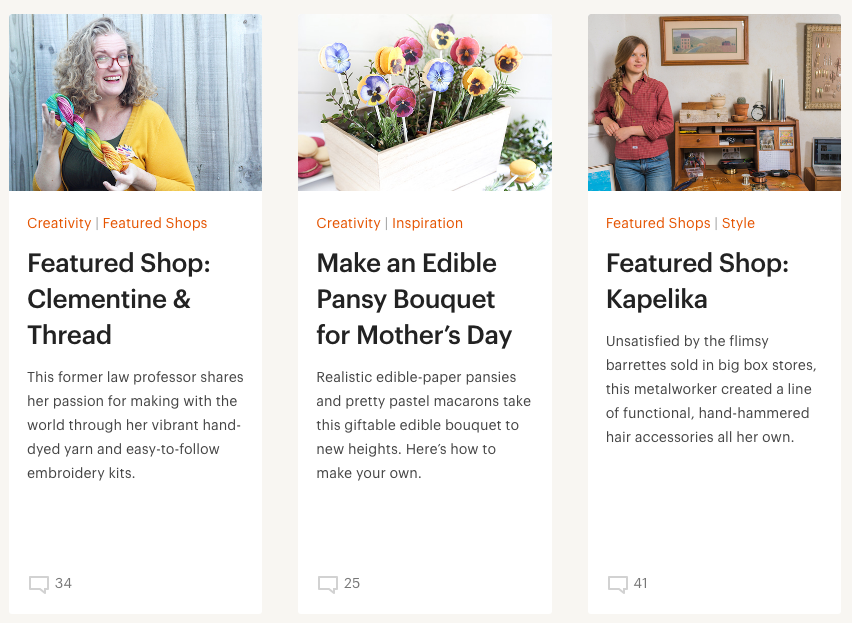
With endless amounts of content being published every minute, it is difficult for a brand to stand out. Creating content for the sake of creating content is no longer a viable content strategy. We hope you were able to learn why these brands and their content efforts are working examples for you as you continue to ideate, develop, and refine your content strategy.
